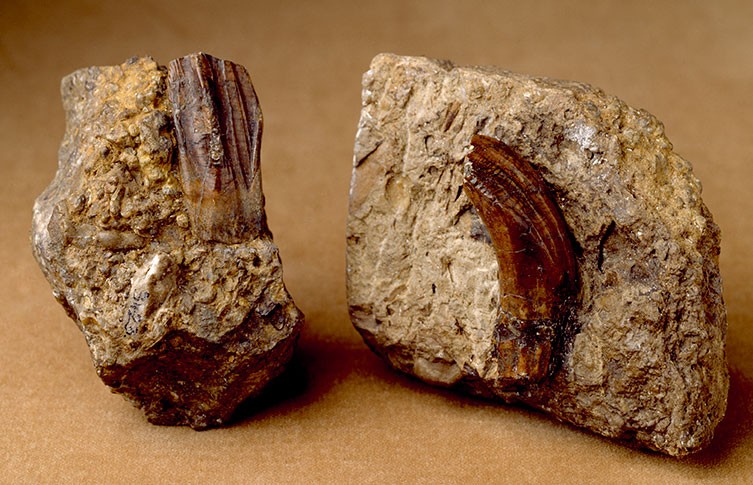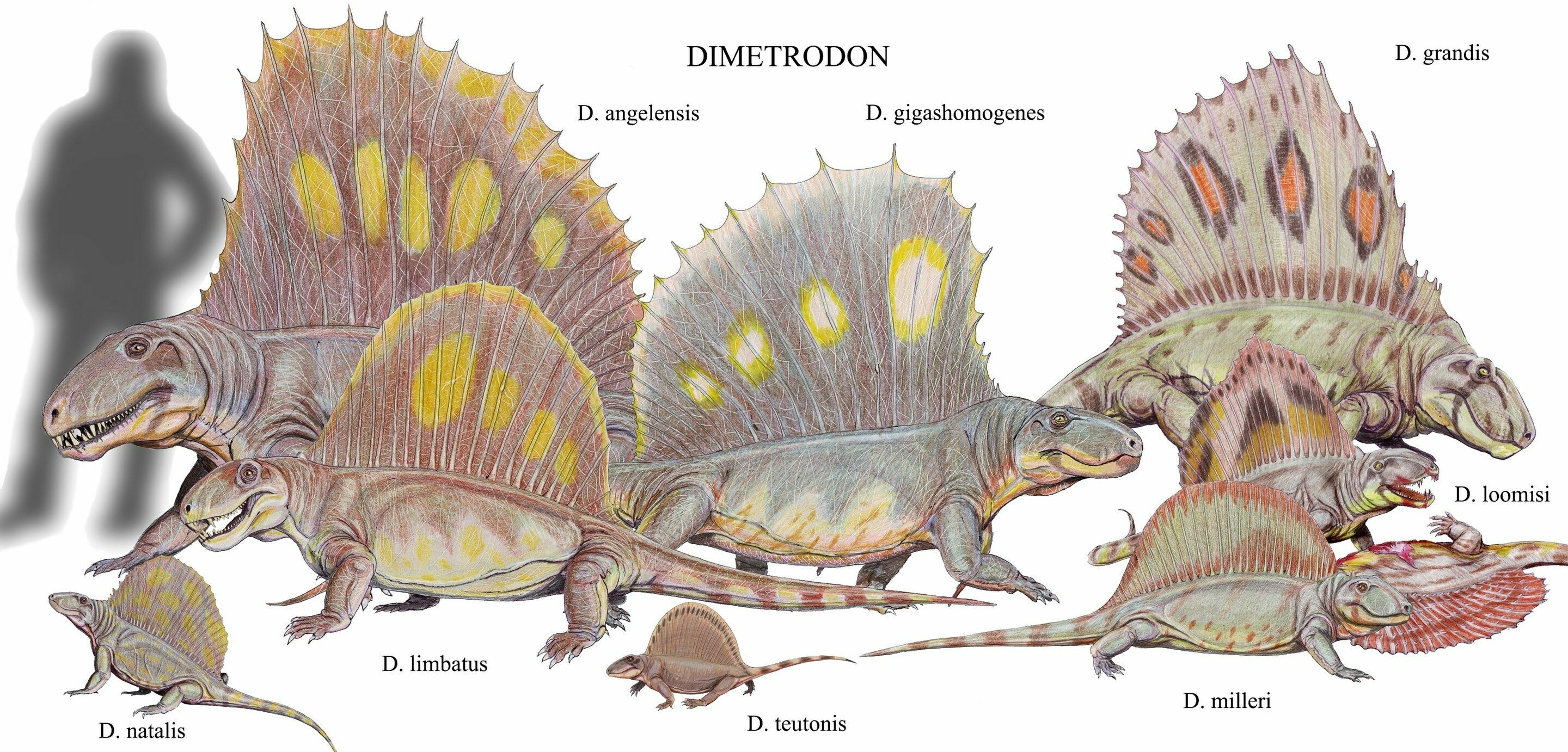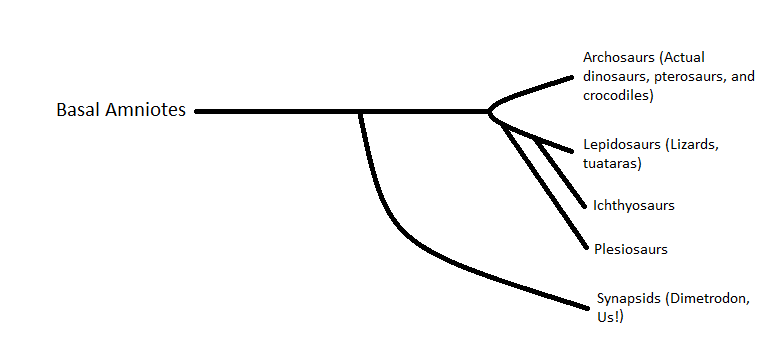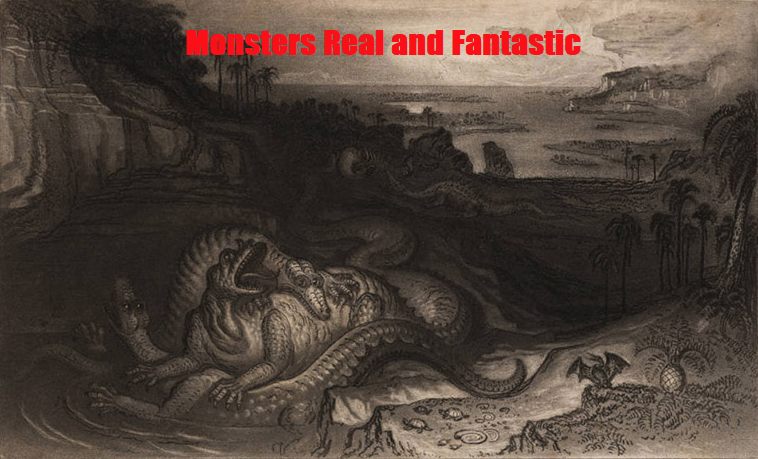So dinosaurs are kind of a big deal.
Their popularity so eclipses all other prehistoric life that people will be earnestly surprised that there was life before them, let along billions of years worth of it. I’ve seen people declare pretty much any extinct animal a dinosaur. Wooly mammoth? Sure, that’s a dinosaur. Sabertoothed tiger? Sabertoothed dinosaur. Early humanoids? Okay, nobody who thinks this knows they exist. On a slightly more educated level, the term dinosaur is slapped onto every popular prehistoric reptile, or non-reptiles that resemble them. Dimetrodon, plesiosaurs, and pterosaurs are those that get this treatment most often. Anybody interested enough to read this probably knows those aren’t dinosaurs, but what most don’t know is just what they actually are and just what distinguishes a dinosaur from their closest relatives.

An early example of the tree of life, portrayed as a hierarchical system from primitive forms to more advanced ones.
Taxonomy is the science of how all life forms relate to one another. It was invented in its original form by Carolus Linaeus (discussed before) in the 1730s, based on the patterns he had noticed in nature. Every living thing could be grouped into a small category, which grouped into larger and larger categories. A cat is a felid is a feliform is a carnivore is a mammal is a synapsid is an amniote is a tetrapod is a vertebrate is an animal, each category encompassing more and more smaller categories within. The great thing about this system was that it allowed newly discovered lifeforms to be slotted easily into the existing structures.

Mary Morlund, lithograph of Megalosaurus jaw.
Fragments are Megalosaurus were known long before they could be properly identified. The bottom portion of a femur found in England that was identified first as an imported war elephant and later as a giant human. I’m not sure why the describer went from something reasonable to something that didn’t exist, but things were strange in the 1600s. In the early 19th century, more bones began to be found in a quarry, identified soon as a massive reptile. At first it was identified with Mosasaurus, which had been known to be a massive lizard since 1808, but before it was described properly, another ancient reptile had come to light.

The first Iguanodon fossils.
In 1822, Mary Ann Mantell was riding with her husband, Dr. Giddeon Mantell, to visit one of his patients when she noticed unusual rocks alongside the road. These rocks turned out to include the teeth of an unknown animal. Giddeon, an amateur paleontologist, knew enough to realize that they were something new and reached out to his friend Georges Cuvier (who would also be the first to describe Megalodon, making it an official genus), who suggested that the teeth belonged to a reptile. Giddeon began looking at modern reptiles and eventually noticed a similarity between his fossils and the teeth of a modern iguana. In 1825, one year after Megalosaurus was named, he put the name Iguanodon to his fossils. The second dinosaur had been discovered, this one an herbivore. An entire ecosystem, totally unknown to humanity, was beginning to take shape.

Iguanodon and Hylaeosaurus by Benjamin Waterhouse Hawkins. Finally grouped as relatives rather than strange individual animals.
Once more of Iguanodon’s skeleton had been discovered and a third dinosaur named Hylaeosaurus was discovered, Sir Richard Owen, one of the day’s leading naturalists, began to notice similarities. All three animals had a similar sacrum, a fused section of their spine at the base of their tails. Based on this, he posited that they were all part of a group called Dinosauria. He was also responsible for reigning in some of the less reasonable estimates of dinosaur size through more careful measurement and determining that they would have held their limbs under their body.
Now that the history has been covered, the question is how we define Dinosauria today, and, in fact, whether it exists at all as a natural group. In 1888, Harry G. Seeley suggested that Dinosauria was invalid, that the two broad groups of dinosaurs, Saurischia (lizard-hipped) and Ornithiscia (bird-hipped), were two entirely different groups of animals, with their latest common ancestor not being an animal we would call a dinosaur. He had a variety of lines of evidence for this, foremost being their very different hip structures, backed up by the fact that the Saurischian dinosaurs have hollow vertebrae while the Ornithscian dinosaurs do not. He suggested that any group that included both branches of dinosauria would have to include crocodiles (which are somewhat closely related, as we will get into), anomodonts (which are synapsids, closer related to mammals than reptiles), birds (which actually are dinosaurs!) and ornithosaurs (which I couldn’t find any modern information on so I’m forced to assume he meant the ones in the Witcher).

Deinonychus, one of the dinosaurs that inspired a new view of the group as a whole. Drawn by Robert Bakker, who is about to be really important.
It took until the 1970s for scientific opinion on dinosaur taxonomy to turn around, reuniting the two branches of their family tree. In the mid 1960s, the discovery of Deinonychus (a medium dromeosaur, like Velociraptor from the Jurassic Park movies) began a trend called the Dinosaur Renaissance. One of the leaders of this change was John H. Ostrom, one of the first paleontologists to suggest that birds were in fact members of Dinosauria. One of his students, Robert Bakker, had a lot of odd, vibrant ideas about dinosaurs, some of which have held up and others which have proven faulty. At the time they were seen as sluggish, stupid creatures who had been rightfully swept away by the superior mammals. Bakker proposed that they were instead warm-blooded, with many dinosaurs being capable and active animals. Bakker used much of the evidence had gathered about dinosaur metabolism to suggest their unity as a group, separating them from other reptiles with no ability to regulate their own temperature.
Nowadays, the evidence for dinosaur monophyly is a bit more detailed. Dinosauria is considered to have 12 major synapomorphies, which are characteristics consistently shared by an ancestral species and all of its descendants. These don’t tend to be obvious features a layman would understand, as most of those are heavily effected by environmental pressures. However, in a pinch, there are a few ways to distinguish dinosaurs from other reptiles. Most importantly, dinosaurs have their legs directly under their body, like mammals. Also, besides birds and maybe Yi Qi, which had wings more like a bat, dinosaurs didn’t fly, and besides Spinosaurus, they were terrestrial, spending most of their time on land.

Silesaurus depicted with speculative protofeathers. Dr. Jeff Martz
Let’s talk nested categories again. We are going to be going out, category by category, and identifying things that are often mistaken for dinosaurs within them. Our first step is Dinosauriformes, which doesn’t actually contain any commonly-recognized animals besides the dinosaurs themselves. I simply wanted to call attention to Silesaurus and its relatives. The very earliest dinosaurs, only known from fragmentary remains, may have resembled dinosauriforms like Silesauris to some extent, with long necks and a quadrupedal stance.

Pterosaurs aren’t marsupials, but they also aren’t dinosaurs. Edward Newman
A little further out is Avemetatarsalia, defined as all archosaurs more closely related to birds than to crocodiles. Grouped within this category, nested alongside the dinosauromorphs, are the pterosauromorphs, including of course the pterosaurs. This does put them quite close to dinosaurs, although dinosaurs still have several closer relations. The placement of pterosaurs has been contentious ever since their discovery. It was known early on that pterosaurs had a fuzzy covering, retained as an impression in many of their fossils, but it was uncertain just what this meant. Early on, it was thought that this meant they were some kind of strange mammal, but further research since then has elaborated on the nature of these filaments.

A pterosaur with complex branching pycnofibers. Yuan Zhang
Now, it seems that pycnofibers may have in fact been homologous with feathers, meaning that they had a common origin instead of evolving separately to fulfill a similar function. The most compelling evidence came with the discovery of a pterosaur fossil with branching filaments, a feature before only found in feathers. Either pterosaurs developed branching filaments on their own or the common ancestor of all pterosaurs and dinosaurs had feathers, which is pretty amazing! Any branch of dinosauria could have been fuzzy!

A family of plesiosaurs fends off a pliosaur. Darren Naish
Plesiosaurs are one of three major branches of sea reptiles often mistaken for dinosaurs. “Pliosaur” is a general term for plesiosaurs with shorter necks and larger heads compared to their body proportions. Their exact position has been debated extensively. Previously, they were considered as relatives of turtles, which would put them on the far outskirts of the entire reptilian family. Now, a more detailed analysis of their traits puts them closer to lepidosaurs than to archosaurs. Lepidosauria is the largest branch of reptiles today, including lizards and tuatara, with snakes as a branch of lizards. Sadly, there really is nothing like a plesiosaur today. Calling them dinosaurs does no favors to their vast diversity. From the late Triassic to the end of the Cretaceous, they were one of the most successful groups in the ocean, filling a variety of carnivorous roles. In the Jurassic, the largest predators were plesiosaurs, and even after the evolution of Mosasaurs in the Cretaceous, they remained more populous in the open ocean.

Ichthyosaurs of an unknown genus and species. Heinrich Harder
Much like plesiosaurs, Ichthyosaurs proved difficult to place. Their reptilian bodies have been retrofitted into a shape closer to a shark, with no hind limbs, a tail fluke, and even a dorsal fin. A variety of strange theories emerged in the early days of scientific research on extinct animals. Some declared them rather odd fish, others, apparently looking at their elongated snouts, said they might have relation to birds. It seems now that they were closer to plesiosaurs, occupying a similar position just outside of the lepidosaurs. You can see the difficulty that taxonomy with extinct animals can cause. Without soft tissues and DNA, figuring out the relations of such a strange animal can be a frustrating process, especially when everything insists on becoming a torpedo-shaped ocean hunter.

A Mosasaur that captures their lizardly nature. Dan Varner
Speaking of torpedo-shaped ocean hunters, the Mosasaurs are the only great branch of famous Mezozoic reptiles who were, in fact, lizards. In particular, they were likely varanids, in other words monitor lizards. In modern times, the largest monitor lizard is the Komodo dragon, which maxes out at about 9 feet long. The largest confirmed mosasaur fossil is 43 feet long, with estimates of potential 50 foot members of Mosasaurus hoffmanii based on incomplete remains. Being lizards puts them on the other side of the lepidosaur/archosaur divide from dinosaurs. As varanids, they would have looked somewhat familiar to us, but totally adapting to the ocean. As the picture depicts, they gave live birth instead of laying eggs. In addition, several species of mosasaur, although not all, had tail flukes like a shark, while others had a more typical paddle-like tail.

Our final “dinosaur”, Dimetrodon is a heavily misunderstood animal. Often called a “mammal-like reptile”, this is an outdated term. Dimetrodon is a member of the synapsids, a branch of animals that is parallel to the animals we consider true reptiles. In our time period, the only synapsids are mammals, which means that of everything in this article, these are our closest relatives. Also important to note is that Dimetrodon was a whole genus, with multiple species, from the massive angelensis to the tiny teutonis, smaller than an adult iguana today. You could keep a Dimetrodon teutonis in a terrarium today!
Dimetrodon, unlike most of the animals here, never lived alongside dinosaurs. It lived in the Permian period, the last period of the Paleozoic Era, the first era with animal and plant life. The first dinosaurs were differentiated from other archosaurs around 240 million years ago, at which point Dimetrodon had been extinct for nearly 30 million years. In Dimetrodon’s time, synapsids were dominant on land, including many groups that nobody remembers today. I won’t go over all of them, but I really think you’ll get a kick out of the caseids.

You’re more related to this nearly-headless goofball than to a Tyrannosaurus. Sorry. Vince Smith
We have only scratched the surface of prehistoric life here. There are hundreds of obscure groups, reptilian and not, and that’s why I care so much about taxonomy. Lumping every strange reptile or reptile-like animal of the past into just being more dinosaurs undercuts the sheer diversity these creatures had. I could explore dozens of strange groups within the archosaurs alone, a group full of odd lizard-gerbils, armadillo crocodiles, and even a whole bunch of insane dinosaurs most people have never heard of. However, instead, I am going to end with a very simplified tree showing the relative relations between these animals. This isn’t a scientific diagram at all, and shouldn’t be mistaken for one. I simply want to provide a clear reference to those confused by the terminology above.

Want more prehistoric life? Check out the articles below!
